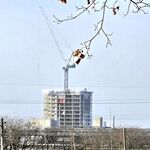On Facebook, it was asked what to do with these coaches. These are the Via HEP Budd coaches. Via owns 43 of them. Since they are still in decent enough condition, what could be done with these once the Siemens trains are all delivered?
Here are some options:
1) used to add even more service in the QC - W corridor.
It is certainly possible and while I wouldn't rule it out, I wouldn't hold my breath on this option happening either. VIA would likely want to wait until the dust settles with the new fleet and then if they can find a route with extra capacity that they could add a train to, and they could make the economics work, then maybe they might. Of course the HFR/HSR plan might make this impossible as the new consortium likely wouldn't inherit the old HEP coachers.
2) Used to supplement the LD Fleet to add more coaches on the routes where they are needed
They certainly might use some of the corridor HEP I coaches to help supplement the regional and long distance fleet, but I am not sure they need more coaches and baggage cars for those trains. They could use them to increase frequency on some of the daytime regional trains, but that would require government approval (and funding) to cover the operational deficit, so it isn't likely.
3) Add new service else where.
Personally,I feel that adding new service elsewhere would be a good idea. You could make 14 3 car trains with them. Couple the P42s to them and run them as corridor like service. If they were divided among 3 routes, the routes I would suggest are Calgary - Edmonton, Halifax - Saint /John, and Toronto - Sudbury
This option falls in two categories:
- Routes that already have long distance passenger trains running along them (like Toronto - Sudbury Jct. and Halifax - Moncton), and
- Routes that don't have passenger trains running along them (like Calgary - Edmonton and Moncton - St. John).
For the first category, the tracks are already approved for passenger use and stations already exist, so the up front cost shouldn't be too bad. Of course this assumes that there is sufficient capacity and the speeds along the tracks are suitable for intercity passenger use. Government approval (and funding) would definitely be required, as those routes would be operating at a deficit (otherwise VIA would be operating those routes today).
For the second category, a significant amount of up front funding would be required to upgrade the tracks and get them approved for passenger use, as well as building stations along the way. Further funding would be required to the subsidize their operations.
As a result, neither of these categories are something VIA could just do on their own, as they would additional funding. Given how unenthusiastic the government has been about HFR, which has a much higher chance of being successful, I don't see VIA being keen on pushing any of these projects.
For Calgary - Edmonton service, start them off running several times a day each way. It used to do it in under 4 hours, so 2 trains could leave each end and then for about 12 hours do 3 runs each day and have a spare for breakdowns and maintenance.
First of all, that was over 35 years ago and was with RDCs, not locomotive hauled coaches. The Alberta government pressured the federal government into cancelling the train, because at those speeds, the trains caused several fatal collisions. One can only assume the infrastructure has degraded since then, so without significant investment, a new train service today would be significantly slower than it was back then.
While I do think that passenger servicer should be brought back to the Calgary - Edmonton corridor, using old trains nearing the end of their life is not a good way to earn votes out west. The western media, the Danielle Smith government and Pierre Poilievre would have a field day, claiming that getting castoff trains from Ontario and Quebec is an insult and the people of Alberta deserve better.
For the other 2 routes, a single daily service each way would be more than plenty to start.
I feel as though Toronto - Sudbury is best left for Ontario Northland as it is intra-provincial and they do already provide bus service. I'm not convinced that it will happen, but feel it is the route's best shot.
Halifax - St. John might actually be the best option. While there is the risk of it backfiring politically, I don't see there being as much political unrest in the marmites, so they might just be happy to get the service. Half of the route already has passenger rail service, so fewer infrastructure upgrades will likely be needed. For it to happen, I do feel as though there needs to be buy in (both politically and financially) from both the Nova Scotia and New Brunswick governments though.
I think the most likely option though is:
4) VIA sells/gives away the HEP coaches.
Tshiuetin Rail Transportation has several Budd coaches and they may want more. Also the Keewatin Railway Company operates ex VIA/CN CC&F cars and they may want an upgrade.
There are also many tourist railways in the USA that may want to operate these coaches. The HEP II coaches came from Amtrak, so it would make sense for them to go back home to the USA. Various railway museums may also want some of them.




